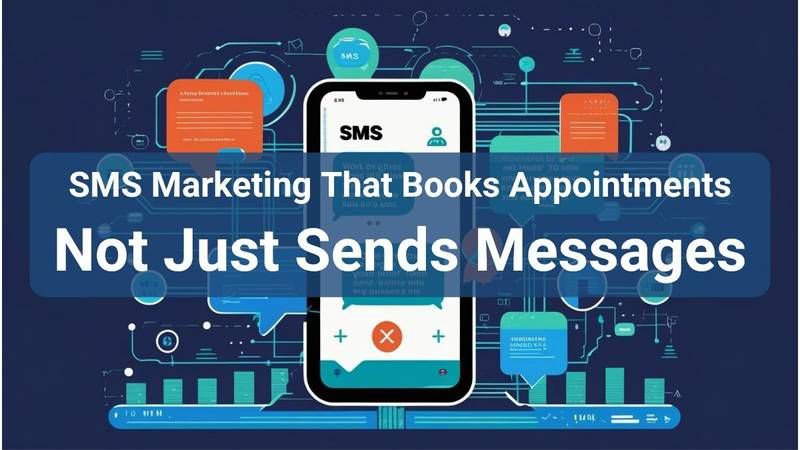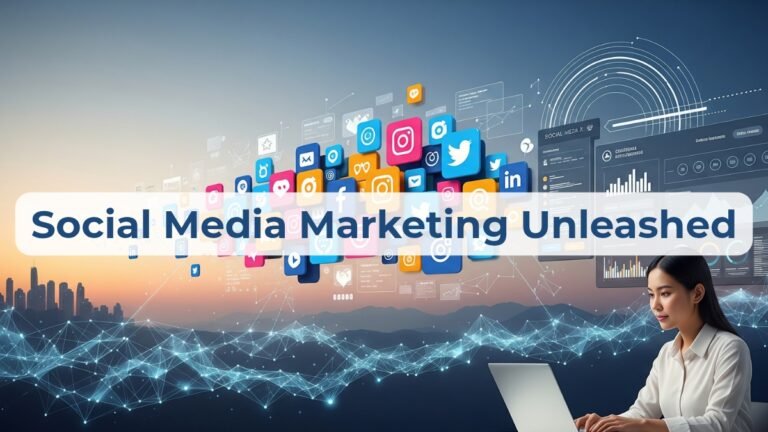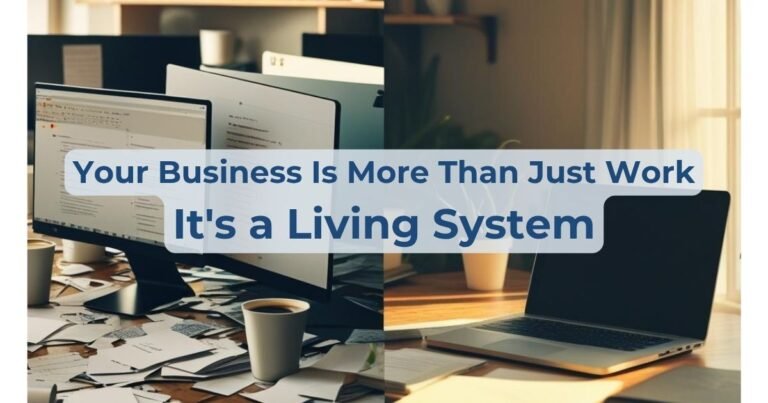
The Foundation: Why We Build for the Long Term
We believe genuine digital growth stems from a solid strategic base. In a world saturated with fleeting tactics, we focus on building long-term value and delivering measurable results for the SMBs and startups we serve. Honesty, transparency, and total dedication to our clients’ success are the cornerstones of our approach.
Working with healthcare providers and service businesses across markets like Houston has taught us something crucial: the businesses that dominate their markets aren’t just good at what they do—they’re exceptional at how they communicate. Today, we’re pulling back the curtain on the most underutilized communication channel that’s transforming service businesses everywhere.
The SMS Revolution: Why 98% Open Rates Are Just the Beginning
Picture this: You’re a busy professional rushing between meetings when your phone buzzes. It’s not another promotional email buried in your inbox—it’s a text from your dermatologist reminding you about tomorrow’s appointment. You read it immediately, confirm with a quick “YES,” and move on with your day.
That’s the power of SMS marketing in action, and it’s exactly why smart service providers are abandoning outdated communication methods for something that actually works.
Here’s what most business owners don’t realize: while your carefully crafted emails sit unread in spam folders, text messages achieve a staggering 98% open rate. But here’s the kicker—it’s not just about being seen. SMS messages get responses within minutes, not hours or days. When someone needs to reschedule their appointment or confirm their service call, they want instant communication, not a formal email exchange.
The Psychology Behind SMS Success
Think about your own behavior for a moment. When was the last time you ignored a text message for more than a few minutes? Probably never. That’s because texting taps into something fundamental about human communication—it feels personal, immediate, and important.
For service businesses, this psychological advantage translates directly into revenue. A medspa we worked with discovered that patients who received SMS appointment reminders showed up 89% of the time, compared to just 65% for those who received email reminders. The difference? An additional $73,000 in monthly revenue from appointments that actually happened.
This isn’t just about technology—it’s about meeting your customers where they already are and communicating the way they prefer to communicate. When you send a text message, you’re not interrupting their day with marketing noise. You’re providing helpful information through their preferred communication channel.
🎯 Who’s Winning Big with SMS Marketing? The Service Businesses That Get It
The most successful SMS marketing campaigns don’t come from massive corporations with unlimited budgets. They come from smart local service providers who understand their communities and communicate like real people, not corporate robots.
MedSpas: From Booking Chaos to Revenue Machines
MedSpas represent the perfect SMS marketing success story. These businesses deal with appointment-based services where timing is everything, seasonal promotions that require immediate action, and follow-up care that can’t wait for email.
Consider the challenge: A potential client inquires about Botox treatments on a Monday morning. Traditional email marketing might reach them by Tuesday, but they’ve already booked elsewhere. SMS changes this game completely. Within minutes of their inquiry, they receive a personalized text: “Hi Sarah! Thanks for your interest in our Botox treatments. Dr. Martinez has openings Thursday and Friday this week. Which works better for your schedule?”
The response rate? Over 67% within the first hour, compared to 12% for email over 24 hours. This isn’t just about speed—it’s about creating a conversation that feels natural and helpful rather than pushy or salesy.
Dental Practices: Making Healthcare Feel Human Again
Dental anxiety is real, and impersonal communication makes it worse. The most successful dental practices use SMS to transform sterile appointment reminders into warm, personal connections.
Instead of robotic phone calls, patients receive messages like: “Hi Jennifer! Maria is looking forward to your cleaning tomorrow at 2 PM. We’ve got your favorite coffee ready in the waiting room. Reply CONFIRM when you’re all set!”
This approach reduced no-show rates for one dental practice from 28% to 11%, while simultaneously increasing patient satisfaction scores by 34%. The secret? They made routine healthcare feel like a conversation with a friend who genuinely cares.
Service Contractors: When Every Minute Counts
Emergency service companies face unique communication challenges. When someone’s air conditioning fails during a heat wave, they don’t want to wait for email confirmations or return phone calls. They want immediate reassurance that help is coming.
Service companies using SMS automation see remarkable results. A typical sequence might include immediate confirmation: “Got your AC repair request! Our technician Mike will be there between 2-4 PM today. He’ll text you 30 minutes before arrival.” Then ongoing updates: “Mike is finishing up his current job and will be there in 45 minutes. Thanks for your patience!”
This level of communication transforms emergency situations from stressful experiences into demonstrations of professional competence.
💡 The Three SMS Campaign Types That Actually Generate Revenue
Understanding effective SMS marketing means recognizing that different messages serve different purposes in your customer journey. The most successful service businesses deploy three distinct campaign types, each designed to maximize engagement at specific moments.
Campaign Type 1: The Art of Gentle Reminders
Appointment reminders seem simple, but the difference between effective and ineffective reminders determines whether you’re running a profitable practice or constantly dealing with expensive no-shows.
The psychology behind effective reminders involves more than just conveying information—it’s about creating positive anticipation. Instead of “Your appointment is tomorrow at 2 PM,” successful practices send messages like: “Hi Sarah! We’re excited to see you tomorrow at 2 PM for your consultation with Dr. Johnson. We’ve reviewed your questions and have some great options to discuss!”
The key elements that make reminders work include specific personalization, clear value proposition, and simple response options. When you use the provider’s name, it creates connection. When you mention what the patient will gain from attending, it reinforces value. When you make confirmation effortless, you remove friction from the process.
Timing plays a crucial role in reminder effectiveness. Send them too early and people forget again. Send them too late and they can’t adjust their schedules. Our testing shows that 24 hours is optimal for most appointments, with a gentle follow-up 2 hours prior for high-value services.
Campaign Type 2: Promotions That Feel Like VIP Access
The most effective promotional SMS campaigns don’t feel like advertising—they feel like exclusive insider information. This distinction transforms typical discount announcements into compelling opportunities that customers act on immediately.
Consider the difference between these approaches. Generic promotion: “20% off all services this week!” VIP approach: “Hi Jennifer! As one of our valued patients, you get first access to our spring skin renewal package. Dr. Martinez has reserved spots for his VIP patients this week only. Ready to glow? Reply GLOW and we’ll reserve your spot!”
The psychological triggers here are powerful. Exclusivity makes people feel special. Personal recognition builds loyalty. Time sensitivity creates urgency. Specific benefits rather than generic discounts demonstrate value.
Seasonal promotions work particularly well because they align with natural customer behavior patterns. Dermatology practices can promote summer skin prep in May, wellness centers can offer stress management packages during busy seasons, and fitness centers can capitalize on New Year motivation with personalized program offerings.
Campaign Type 3: Follow-Up Sequences That Convert Leads
Here’s where most service businesses lose enormous amounts of money. They invest heavily in generating leads through advertising, content marketing, and referrals, then fail to follow up effectively. SMS transforms this critical gap into a competitive advantage.
The most effective follow-up sequences begin immediately after initial contact. When someone fills out a form on your website, they should receive confirmation within minutes: “Thanks for your interest in our dental services! Dr. Smith will personally review your information and text you within 4 hours with available appointment times.”
This immediate response accomplishes several things. It confirms that their inquiry was received, sets clear expectations for next steps, and demonstrates professionalism that builds confidence in your practice.
The follow-up sequence continues with value-added touchpoints. Day two might include: “Hi again! Dr. Smith has reviewed your case and noticed you mentioned sensitivity concerns. He has some great solutions to discuss. Are you available Tuesday or Thursday for a consultation?”
Each message in the sequence provides new value while gently moving the relationship forward. By the third or fourth touchpoint, you’re not just following up—you’re demonstrating the kind of attentive care that patients can expect from your practice.
🛡️ Compliance Made Simple: Navigating the Rules Without Losing Your Mind
The regulatory landscape around SMS marketing might seem intimidating, but understanding these requirements is actually your competitive advantage. While other businesses hesitate or take shortcuts, you can build a compliant system that protects your practice while maximizing results.
Understanding 10DLC: Your SMS Business License
Think of 10DLC registration as getting a business license for your text messaging. Just as you wouldn’t operate a medical practice without proper licensing, you shouldn’t run SMS campaigns without 10DLC compliance.
The process involves registering your business with major carriers, describing your SMS use cases, and demonstrating legitimate business purposes. While this might sound bureaucratic, it actually helps legitimate businesses by reducing spam and improving message delivery rates.
Here’s what the registration process looks like in practice. You’ll provide basic business information such as your business name, address, and tax ID. You’ll describe your planned SMS campaigns, which might include appointment reminders, promotional offers, and follow-up communications. You’ll pay modest registration fees, typically $50-100 per month.
The approval process usually takes 1-2 weeks, but once complete, your messages are more likely to reach customers’ phones and less likely to be flagged as spam. This investment pays for itself through improved deliverability and reduced communication costs.
HIPAA Compliance: Protecting Patient Information
Healthcare-related businesses face additional compliance requirements under HIPAA, but these rules don’t prevent effective SMS marketing—they just require thoughtful implementation.
The key principle is simple: protected health information cannot be transmitted through unsecured channels. This means your SMS platform must offer HIPAA-compliant features, including business associate agreements, encrypted message transmission, and secure data storage.
Practical HIPAA compliance involves being strategic about message content. Instead of “Your Botox appointment is tomorrow,” send “Your appointment with Dr. Martinez is tomorrow at 2 PM.” Treatment details can be discussed in person or through secure patient portals.
Many modern SMS platforms handle HIPAA compliance automatically. Services like Klara, SimplePractice, and Weave offer healthcare-specific features that ensure your communications meet regulatory requirements without compromising effectiveness.
Consent and Opt-Out: Building Trust Through Transparency
SMS consent requirements are actually opportunities to build stronger customer relationships. When someone voluntarily opts in to receive your messages, they’re expressing trust in your business and interest in ongoing communication.
The most effective consent strategies integrate naturally into your customer journey. When someone schedules an appointment online, include a clear opt-in checkbox: “I’d like to receive appointment reminders and exclusive wellness tips via text message.” Make the value proposition clear and the choice voluntary.
Managing opt-outs gracefully demonstrates professionalism and respect for customer preferences. When someone texts “STOP,” respond immediately with confirmation: “You’ve been unsubscribed from our text messages. You can still reach us at [phone number] for any questions. Thanks for being a valued patient!”
🔧 Your 5-Step SMS Marketing Implementation Roadmap
Building an effective SMS marketing system might seem complex, but following a structured approach ensures you create a foundation for sustainable growth while avoiding common pitfalls that derail amateur efforts.
Step 1: Choose Your SMS Platform Like You’re Hiring a Key Employee
Selecting the right SMS platform affects everything from message deliverability to integration capabilities, so this decision deserves careful consideration. Think of this choice like hiring a key employee—you want someone reliable, competent, and aligned with your business goals.
For service businesses, platform selection criteria should include integration capabilities with existing systems like scheduling software, CRM, and email marketing tools. You’ll also want compliance features such as 10DLC registration and HIPAA support. Automation options like drip campaigns and triggered messages are essential for scaling your efforts.
Klaviyo excels for businesses wanting to combine SMS with sophisticated email marketing automation. Their platform provides powerful segmentation tools and detailed analytics that help optimize campaign performance over time. Pricing starts around $45 per month for small businesses.
Podium focuses specifically on service business communication, offering features like review management, online booking integration, and customer conversation tracking. Their customer success team understands service business needs and regulatory requirements.
SimpleTexting provides straightforward SMS marketing without complex features that many businesses don’t need. Their platform includes essential compliance tools and basic automation at competitive prices, making them ideal for businesses just starting with SMS marketing.
Step 2: Master 10DLC Registration
10DLC registration has become streamlined, with most major platforms handling the technical details automatically. However, you’ll need to provide accurate business information and clearly describe your intended SMS use cases.
The key to smooth approval is specificity and honesty about your communication plans. Instead of vague descriptions like “marketing messages,” provide detailed explanations: “appointment reminders for existing patients, treatment follow-up instructions, and seasonal wellness promotions for opted-in subscribers.”
During registration, you’ll select your brand classification such as healthcare provider, professional services, or retail. You’ll also describe your opt-in processes. Carriers want to understand how people consent to receive your messages and what value they’ll receive.
Most platforms charge $50-100 monthly for 10DLC registration, plus per-message fees that typically range from $0.02-0.05 per text. These costs are minimal compared to the revenue impact of effective SMS marketing.
Step 3: Segment Your Audience Like a Master Chef
Effective audience segmentation transforms generic broadcast messages into personalized communications that feel relevant and valuable. Think of segmentation like a master chef organizing ingredients—each group receives exactly what they need, when they need it.
Basic segmentation for service businesses includes service type, such as routine versus emergency. You might also segment by appointment frequency, distinguishing between regular and occasional customers. Engagement level is another useful category, separating highly responsive customers from those who need multiple touchpoints.
Advanced segmentation might include seasonal preferences, such as patients who book cosmetic procedures before summer. Treatment history can distinguish first-time versus returning patients. Response patterns can identify immediate responders versus those who need multiple touchpoints.
A dental practice might segment patients into preventive care for routine cleanings, cosmetic procedures like whitening and veneers, and restorative treatments including crowns and implants. Each segment receives different messaging frequencies and content types that match their specific needs and decision-making processes.
Step 4: Write Messages That Sound Human
The most effective SMS messages sound like they’re coming from a knowledgeable friend rather than a corporate marketing department. This human touch is what separates successful service businesses from those that struggle with customer engagement.
Message tone should match your brand personality while remaining professional and helpful. A pediatric dentist might use slightly playful language, while a cosmetic surgeon would maintain more formal professionalism. The key is consistency with your overall brand voice.
Structure your messages with clear value propositions, specific details, and simple calls to action. Instead of “Book now and save 20%,” try “Hi Jennifer! Spring is perfect for starting that skincare routine we discussed. I have openings next Tuesday and Thursday for your consultation. Which works better?”
Personalization goes beyond using someone’s name. Reference previous conversations, acknowledge their specific concerns, and demonstrate that you remember what matters to them. This level of attention builds the kind of loyalty that generates referrals and long-term relationships.
Step 5: Automate Like a Pro
SMS automation allows you to maintain personal connections at scale, but the most effective automated sequences feel carefully crafted for each individual recipient. The goal is efficiency without sacrificing the personal touch that makes service businesses successful.
Start with basic automation workflows that handle routine communications. New patient sequences might include immediate inquiry confirmation, appointment scheduling assistance, pre-visit preparation instructions, and post-visit follow-up care reminders.
More sophisticated automation can branch based on customer responses and behaviors. If someone doesn’t respond to an appointment reminder, they might receive a gentle follow-up with rescheduling options. If they frequently reschedule, they might receive earlier reminders with flexible scheduling suggestions.
The key to successful automation is regular testing and optimization. Monitor response rates, track conversion metrics, and adjust messaging based on what works best for your specific audience. What works for an HVAC company might not work for a wellness center, so customize your approach accordingly.
📊 The ROI Reality: Why SMS Delivers Results That Email Can’t Touch
Understanding the financial impact of SMS marketing helps justify the investment and guides strategic decisions about resource allocation. The numbers consistently demonstrate that SMS delivers superior return on investment compared to traditional marketing channels, particularly for service businesses where timing and personal connection drive success.
Cost Per Acquisition: The Real Numbers
Let’s examine the mathematics of SMS marketing effectiveness using real examples from service businesses. A typical dental practice might spend $200 to acquire a new patient through Google Ads or Facebook marketing. Without effective follow-up communication, 35% of scheduled appointments result in no-shows, effectively increasing the true cost per completed appointment to $308.
SMS appointment reminders can reduce no-show rates to under 12%, bringing the actual cost per completed appointment down to $227. This $81 difference might seem modest, but multiply it across hundreds of appointments annually, and the savings become substantial.
The impact extends beyond immediate cost savings. Patients who receive consistent, helpful SMS communications are 73% more likely to schedule their next appointment and 45% more likely to refer friends and family. These secondary effects dramatically improve the lifetime value of each acquired customer.
Response Time Advantage: When Minutes Matter
Service businesses live and die by response time, and SMS provides an unmatched advantage in this critical area. When someone inquires about emergency services or elective procedures, responding within 5 minutes via SMS can increase conversion rates by 400% compared to email responses sent within an hour.
This isn’t just about speed—it’s about meeting customers where they are and matching their communication preferences. Modern consumers expect immediate responses to urgent needs, and SMS delivers on this expectation consistently.
Consider the typical inquiry process: someone fills out a contact form on your website, receives an automated email confirmation, and then waits for a phone call or detailed email response. By the time you respond, they’ve often contacted multiple providers and may have already made a decision.
SMS transforms this process with immediate text confirmation, quick qualifying questions via messaging, and real-time scheduling coordination. The entire process feels more personal and efficient, creating positive first impressions that influence long-term relationships.
Multi-Channel Synergy: Email Plus SMS Equals Exponential Results
The most successful service businesses don’t choose between email and SMS—they use both channels strategically to create compound effects. Multi-channel campaigns that combine email’s rich content capabilities with SMS’s immediacy see 47% higher engagement rates than single-channel approaches.
A comprehensive communication strategy might include detailed treatment information via email, which allows for images, videos, and lengthy explanations. Immediate appointment confirmations happen via SMS because they’re personal and timely. Pre-appointment reminders use SMS because they’re actionable and convenient. Post-treatment follow-up returns to email for comprehensive care instructions and educational content.
This integrated approach ensures that customers receive the right information through the most appropriate channel at the optimal time. Email handles education and detailed communication, while SMS manages time-sensitive interactions and quick confirmations.
🚀 Your Next Steps: From SMS Curious to SMS Successful
The most successful service businesses share a common trait: they understand that great customer communication is a strategic advantage, not just an operational necessity. SMS marketing provides the tools to create this advantage, but success depends on thoughtful implementation and consistent optimization.
Start Small, Think Big
Begin with basic appointment reminders and confirmation messages. These fundamental communications provide immediate value while allowing you to learn your audience’s preferences and response patterns. As you build confidence and see results, expand into promotional campaigns and more sophisticated automation.
The goal isn’t to revolutionize your entire customer communication system overnight—it’s to gradually improve each touchpoint until your overall customer experience becomes remarkably better than your competitors.
Measure What Matters
Track metrics that directly relate to business success: appointment show rates, response times, conversion rates, and customer satisfaction scores. These measurements provide clear feedback about what’s working and what needs adjustment.
Don’t get distracted by vanity metrics like open rates or click-through rates. Focus on business outcomes such as more appointments kept, faster lead conversion, higher customer retention, and increased referrals.
Build for Long-Term Success
SMS marketing works best when it’s part of a comprehensive customer communication strategy that makes every interaction smoother, more personal, and more valuable. The businesses that win long-term view SMS as an extension of their commitment to exceptional customer service.
Remember that in today’s competitive service landscape, the businesses that communicate most effectively will capture the largest share of customer attention and loyalty. SMS marketing isn’t just about sending messages—it’s about building relationships that drive sustainable growth.
Frequently Asked Questions (FAQs)
What is SMS marketing for service businesses?
SMS marketing allows local service providers like MedSpas, clinics, and salons to engage leads and clients via text — improving follow-up and booking rates.
Is SMS marketing effective for MedSpas and clinics?
Yes. SMS messages have over 90% open rates and are ideal for appointment reminders, promotions, and converting leads from ads into actual bookings.
What tools are needed for SMS marketing automation?
You can use platforms like Klaviyo, Twilio, Apollo.io, or HubSpot with 10DLC-compliant numbers to automate SMS flows and manage replies easily.
What is 10DLC and why does it matter?
10DLC is a U.S. regulation for verified business texting. It ensures your messages are delivered without being blocked or flagged as spam.
How can small businesses get started with SMS marketing?
Start by choosing a compliant SMS platform, registering for 10DLC, collecting opt-ins, and setting up automated follow-up and reminder flows.
💬 Ready to Transform Your Service Business?
The service businesses dominating their markets understand that exceptional customer communication is their secret weapon. They’ve discovered that SMS marketing isn’t just another marketing channel—it’s the missing link that transforms good businesses into great ones.
Want to implement SMS marketing without the guesswork? I’ll show you exactly what to set up for your specific service business, from compliance setup to automated workflows that drive real results.
I’ll personally walk you through the exact systems we use to help service businesses reduce no-shows, increase bookings, and build stronger customer relationships through strategic SMS marketing.
Let’s turn your customer communication into your competitive advantage. Because in today’s service economy, the businesses that communicate best are the ones that win.






